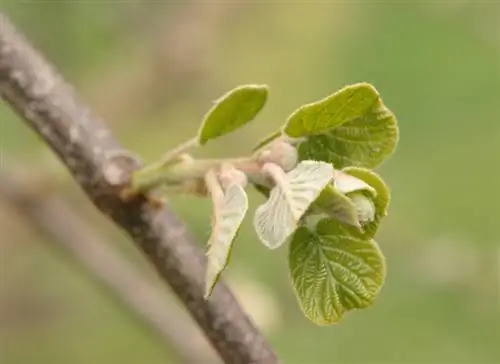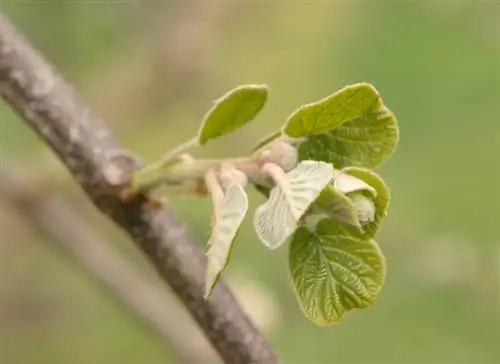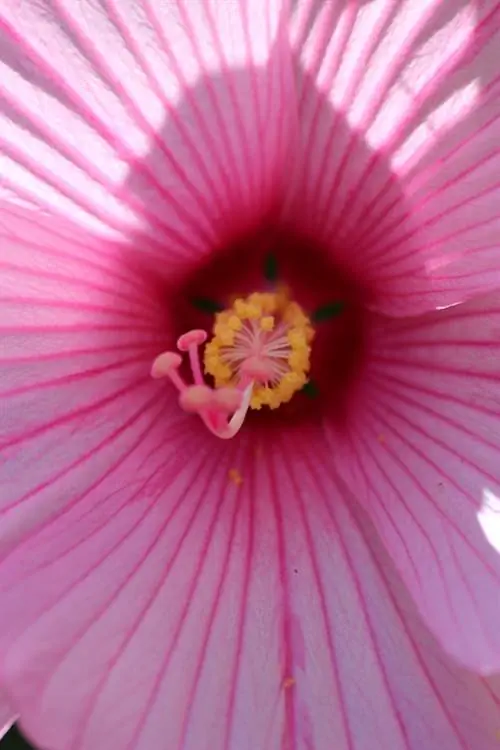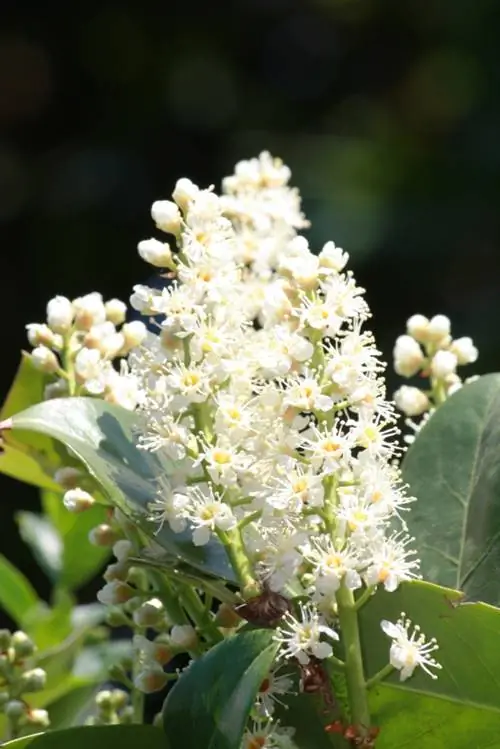- Author admin [email protected].
- Public 2023-12-16 16:46.
- Last modified 2025-01-23 11:20.
The kiwis tolerate transplanting well. However, you should not do it at will, but with all due caution in autumn or spring. The easy-care climbing shrub will thank you with good growth.

When and how should you transplant a kiwi plant?
Transplanting a kiwi plant is best done between the end of February and the beginning of April, before budding. Kiwis are shallow-rooted, so you should keep the root ball as wide as possible when digging and cut the plant back before moving. An improved soil mixture with compost, peat or rhododendron soil makes it easier to grow in the new location.
How is it implemented?
Kiwi is a shallow-rooted plant, i.e. H. that you should keep the bale as wide as possible when digging. The unnecessary roots can be cut off. It is advisable to cut the plant back as much as possible before moving it. This saves you having to cut the plants later in order to restore the balance between the above- and below-ground parts of the plant.
In the planting hole at the future location, add some compost (€12.00 on Amazon) or peat or rhododendron soil to improve the soil and make growing easier. Don't forget a sturdy climbing aid that the creeper needs to climb.
When is the best time?
The best time to transplant is before budding. Depending on the region and weather conditions, it can be between the end of February and the beginning of April. However, since the kiwis tolerate transplanting well, they can also be transplanted at another time of the year if it cannot be avoided. Kiwis planted in early summer have a better chance of overwintering.
Care after transplanting
The transplanted kiwi should continue to be watered well, but waterlogging must be avoided at all costs. Covering the root area with a thick layer of bark mulch has many benefits:
- the earth doesn't dry out so quickly,
- the pH value of the soil is kept in the favorable acidic range,
- The roots are protected from overheating in very sunny locations.
Tips & Tricks
If you no longer want to have a rampant kiwi bush on the house wall, you can simply cut it off. There is no need to dig up the roots if you consistently remove the new shoots until the plant no longer sprouts.






